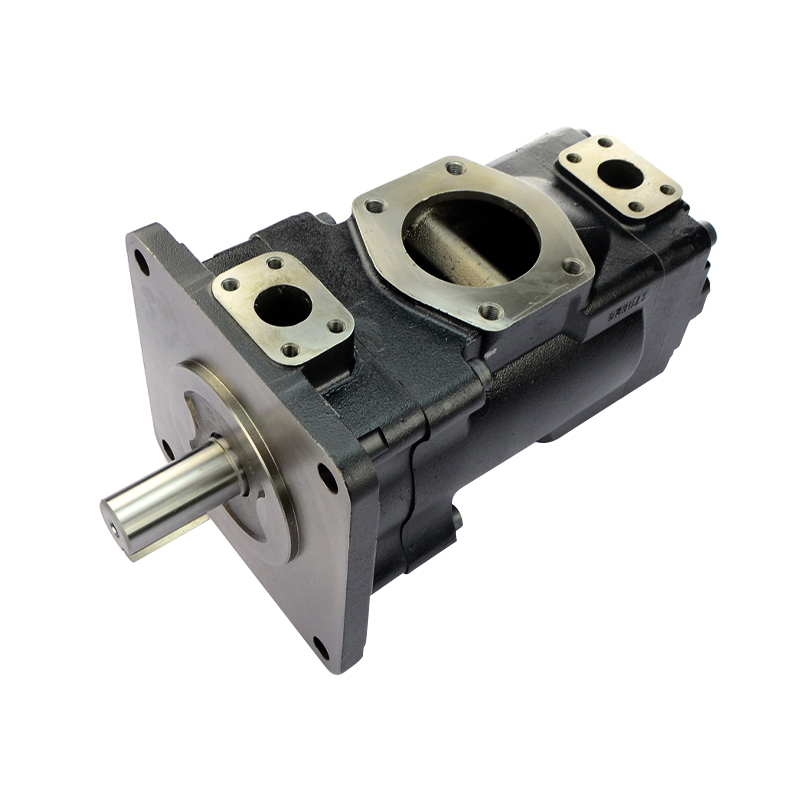Parker Denison vane pumps are widely recognized for their reliability, durability, and high performance in hydraulic systems across industrial, mobile, and aerospace applications. As a variable or fixed displacement pump, the efficiency of a Parker Denison vane pump is critical for energy savings, consistent system performance, and long-term operational cost reduction. Understanding the factors that affect efficiency helps engineers and operators optimize their hydraulic systems.
1. Fluid Viscosity and Temperature
- Viscosity plays a crucial role in vane pump performance. If the hydraulic fluid is too thick (high viscosity), it increases internal friction, which can reduce volumetric efficiency. Conversely, if the fluid is too thin (low viscosity), leakage between the pump’s vanes and housing can occur, also lowering efficiency.
- Temperature Effects: Higher operating temperatures reduce fluid viscosity, potentially causing more internal leakage. On the other hand, very low temperatures can make the fluid too thick, increasing resistance and mechanical losses.
- Maintaining proper fluid viscosity within the manufacturer’s recommended range is essential for optimal pump efficiency.
2. Internal Wear and Component Tolerances
- Wear on Vanes, Cam Ring, and Rotor: Over time, the internal components of the pump can wear down due to friction and abrasive particles in the fluid. This wear increases leakage paths and reduces volumetric efficiency.
- Precision Tolerances: Parker Denison vane pumps are manufactured with tight tolerances to ensure minimal leakage. Any deviation caused by wear or poor assembly can significantly affect pump efficiency.
- Regular inspection and timely replacement of worn components are critical for maintaining peak performance.
3. Pressure and Flow Conditions
- System Pressure: The pump’s displacement efficiency decreases as operating pressure rises due to increased leakage and mechanical stress. Exceeding recommended pressure levels can also shorten component life.
- Flow Rate: Operating a vane pump at flow rates far above or below its optimal range may reduce efficiency. At low flows, leakage proportionally increases, while at high flows, mechanical friction and heat generation rise.
- Designing the system to match the pump’s rated flow and pressure ensures maximum efficiency.
4. Contamination and Fluid Quality
- Particle Contamination: Solid particles in hydraulic fluid can cause abrasion of the vanes and cam ring, increasing internal leakage and reducing volumetric efficiency.
- Fluid Cleanliness: Using clean, filtered hydraulic fluid prevents damage and maintains smooth operation. ISO cleanliness standards (e.g., ISO 4406) are commonly applied in industrial and mobile hydraulic systems.
- Additives and Fluid Type: Selecting fluids compatible with vane pumps, such as anti-wear hydraulic oils, also affects efficiency and longevity.
5. Shaft Speed and Operating RPM
- Pump Speed: The rotational speed of the pump affects both mechanical and volumetric efficiency. At excessively high speeds, friction and heat increase, potentially leading to efficiency losses.
- Low Speeds: Operating below the recommended RPM can cause uneven lubrication and fluid film instability, which reduces efficiency.
- Following manufacturer specifications for speed ensures optimal hydraulic performance.
6. System Design and Installation
- Pipe and Fitting Layout: Long or narrow hydraulic lines can create pressure drops, forcing the pump to work harder and reducing overall system efficiency.
- Misalignment: Improper mounting or misalignment of the pump shaft with the drive system increases mechanical stress and energy loss.
- Reservoir and Filtration Design: Adequate reservoir capacity, correct placement of suction lines, and proper filtration all contribute to steady fluid supply and reduced cavitation, maintaining efficiency.
7. Temperature Management and Cooling
- Excess Heat: High operating temperatures caused by prolonged operation, poor fluid cooling, or high system pressure reduce fluid viscosity and increase leakage, lowering pump efficiency.
- Cooling Systems: Installing heat exchangers or auxiliary cooling systems can maintain fluid temperature within optimal ranges, supporting consistent pump efficiency and component longevity.
8. Seal and Bearing Condition
- Seal Wear: Worn or damaged seals can cause internal and external leakage, directly reducing volumetric and overall efficiency.
- Bearing Condition: Properly lubricated and well-maintained bearings reduce frictional losses and prevent mechanical wear, helping maintain pump efficiency over time.
Conclusion
The efficiency of Parker Denison vane pumps is influenced by multiple interconnected factors, including fluid viscosity and temperature, internal wear, pressure and flow conditions, contamination, shaft speed, system design, temperature management, and seal and bearing condition. Optimal performance requires careful attention to these factors during selection, installation, and maintenance.
By maintaining proper hydraulic fluid properties, monitoring system conditions, and following regular maintenance schedules, operators can ensure that Parker Denison vane pumps continue to deliver high efficiency, reliable performance, and long service life. Understanding these factors not only saves energy and reduces operating costs but also enhances the overall reliability of hydraulic systems in demanding industrial applications.


 English
English русский
русский Español
Español عربى
عربى

